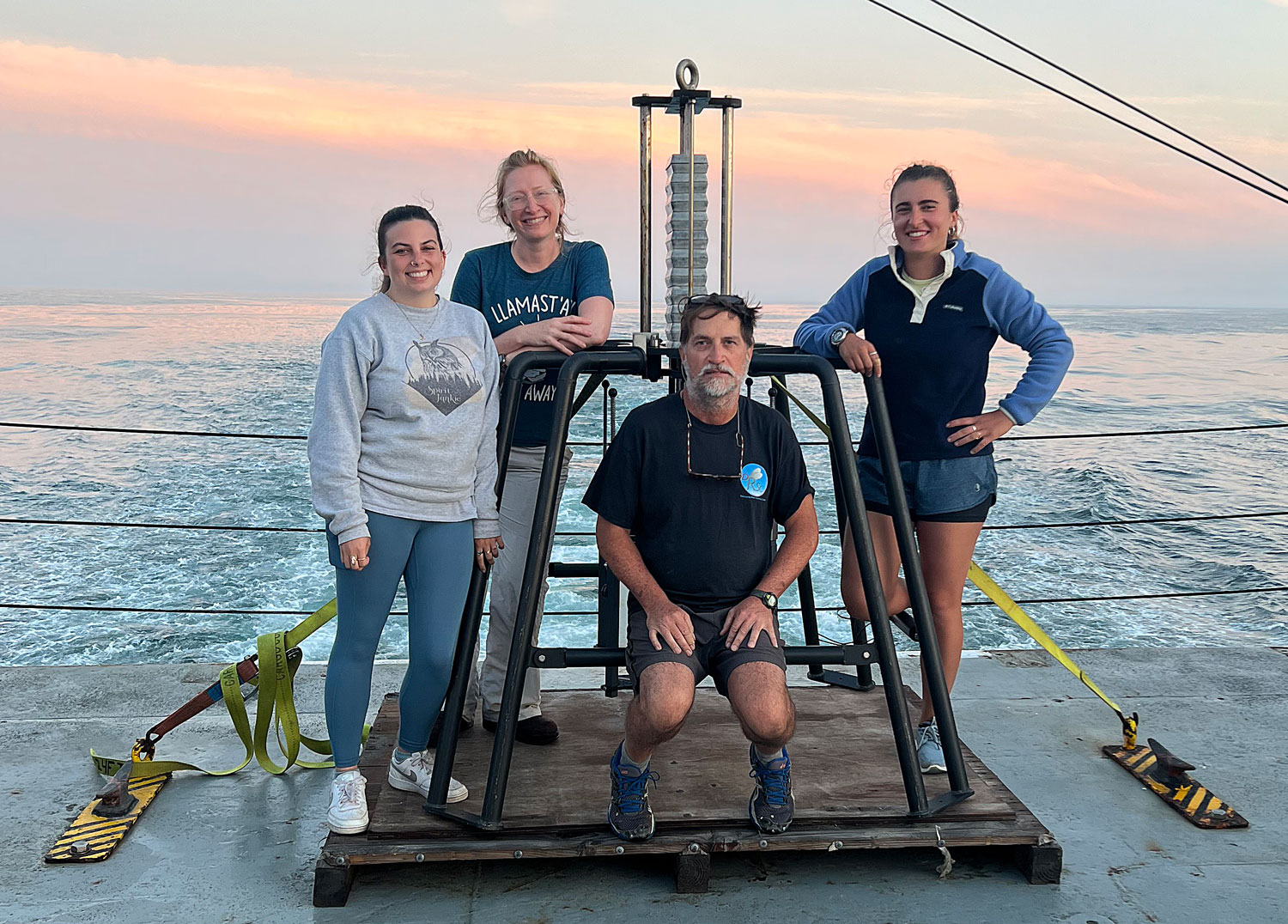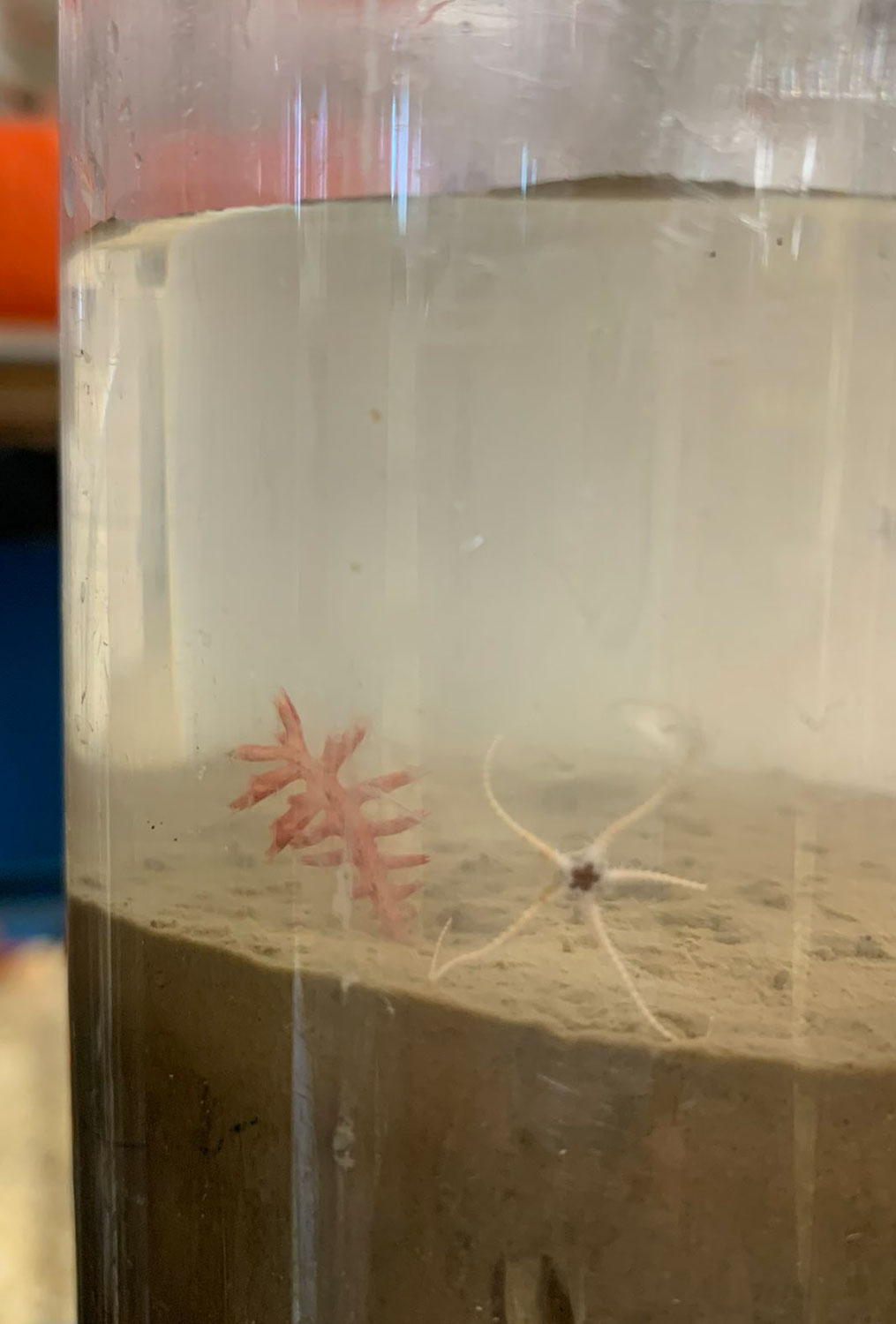By Ewaldo Leitao.
In August of 2022, Prof. Samantha Siedlecki and Prof. Craig Tobias, along with students Halle Berger and Alex Frenzel, went on the East Coast Ocean Acidification Cruise (ECOA-3). The cruise was led by scientists at the University of New Hampshire, joined through transdisciplinary partnerships with other universities, aboard the NOAA Ship Ronald H. Brown. The UConn Avery Point members joined the cruise to investigate the contribution of sediments to carbon chemistry and how that ultimately impacts ocean acidification.
Sam, Craig, Halle and Alex were the sediment coring team. The cores go all the way down to the bottom of the ocean and collect both the upper part of the sediment and the layer of water above it. This way, it is possible to understand chemical reactions in this zone between the sediments and the water above it. “The idea here is to understand how sediments control the chemistry of bottom water. There are sediment reactions that could help buffer acidity. But it's unclear how sediments talk to the water above it or how that communication might change in the future” says Craig. You can learn more on the Facebook page of research vessel Ronald H. Brown.
These measurements are valuable information because they are not only timestamps of what is happening at the moment of collection. Increasing the number of observations and fine-tuning the measurements of these chemical processes in bottom waters helps the research of modelers, like Sam. Models are important to test our understanding of ocean processes. We need more measurements like this to more accurately predict marine climate change. Part of Sam’s work is to use this information into regional ocean models to better constrain the role of sediments in the chemistry of the ocean.
Graduate student Halle uses modeling to understand how ocean acidification and warming impacts marine animals like Atlantic sea scallops. “I learned a lot about how all the different carbonate system parameters are measured, and it was great to meet other students and scientists working on ocean acidification. We got to see some whales and dolphins, amazing sunsets and starry nights, and ate a lot of delicious food. My favorite memory was at one station where all the multi-corer brought up was a single hermit crab (no sediment at all). We named him Fred.”, said Halle.
This was the third ECOA survey, which only happens every four years. The cruise starts in Newport, RI, travels to Portland, ME and then continues on to Nova Scotia. Traveling the Gulf of Maine, Georges Bank, Long Island Sound, Mid-Atlantic Bight, Chesapeake Bay, and the South Atlantic Bight. Each of these regions has their own physical processes that affect ocean acidification in each region, such as the Gulf of Maine receiving cold waters from the northern Labrador current and freshwater from rivers. In each of these regions, ocean acidification will likely have different effects. In the South Atlantic Bight, coral reefs, soft bottom corals, and therefore fish abundance may decline with ocean acidification. To better understand and accurately predict the impact of ocean acidification in different ecosystems, it is important to continuously do these measurements in order to understand how processes are changing over time in such dynamic environments.


